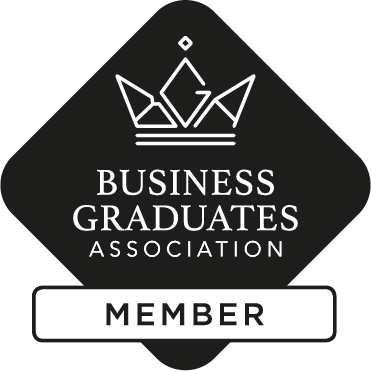University certificate
Scientific endorser

The world's largest faculty of information technology”
Introduction to the Program
With the best developed distance learning systems, this MBA will allow you to learn in a contextual way, learning the practical skills that you need"
This intensive specialization program is aimed at those interested in attaining a higher level of knowledge of Corporate Technical Data Science Management. Its teaching program is unique for its careful selection of technologies, including the most recently incorporated and in demand in the business world. In addition, the incorporation of specific modules for the improvement of business vision and the management of multidisciplinary teams, makes this program different and capable of covering a large part of the educational needs of any professional who wishes to position themselves as a reference in the theoretical and practical knowledge of the latest technologies.

In today's rapidly changing world, the proliferation of new technologies is a constant. Currently, we are accustomed to cutting-edge tools, platforms or technologies that are becoming obsolete with reduced applicability in the business environment.
Similarly, it is only natural that emerging or non-existent technologies in niche markets become trends in more general areas.
Without any doubt, this is an unstoppable and constantly evolving process, the maximum exponent of the current technological revolution, which forces IT professionals to specialise on a permanent basis.
In view of this situation, this MBA in Corporate Technical Data Science Management is offered as a comprehensive program that includes the most advanced and demanded technologies in the business environment.
Therefore, in an exercise of synthesis, from both a technical and business perspective, a set of subjects that are not usually covered by general educational programs has been selected, with the aim of providing students with the necessary technological knowledge to address multiple current technological problems through the use of the most appropriate and advanced techniques.
As such, the combination of both purely technical and business subjects, make this Professional Master's Degree a cutting-edge specialization especially oriented to professionals who seek to learn the most currently widespread technologies, or a higher level of knowledge of these.
The main objective is to enable students to apply the knowledge acquired in this course to the real world, in a work environment that reproduces the conditions that may be encountered in the future, in a rigorous and realistic manner.
As it is a 100% online program, students will not have to give up personal or professional obligations. Upon completion of the program, students will have updated their knowledge and will be in possession of an incredibly prestigious degree that will allow them to advance both personally and professionally.
An intensive professional growth program that will allow you to intervene in a sector with a growing demand for professionals”
This Professional master’s degree in Corporate Technical Data Science Management contains the most complete and up-to-date program on the market. The most important features include:
- Practical cases presented by experts in Advanced IT Technologies
- The graphic, schematic and eminently practical contents with which it is conceived gather scientific and practical information on those disciplines that are indispensable for professional practice
- Practical exercises where the self-assessment process can be carried out to improve learning
- Its special emphasis on innovative methodologies
- Theoretical lessons, questions to the expert, debate forums on controversial topics, and individual reflection assignments
- Content that is accessible from any fixed or portable device with an Internet connection
A high-quality program that will allow students to advance quickly and steadily in knowledge acquisition, with the scientific rigor of a global quality teaching"
The program’s teaching staff includes professionals from the sector who contribute their work experience to this training program, as well as renowned specialists from leading societies and prestigious universities.
The multimedia content, developed with the latest educational technology, will provide the professional with situated and contextual learning, i.e., a simulated environment that will provide immersive education programmed to learn in real situations.
This program is designed around Problem-Based Learning, whereby the professional must try to solve the different professional practice situations that arise during the course. For this purpose, students will be assisted by an innovative interactive video system created by renowned and experienced experts.
A complete and cutting-edge program that will allow you to progressively and completely acquire the knowledge you need to work in this sector"

Comprehensive yet focused; this program will provide you with the specific knowledge IT professionals need to compete among the best in the sector"
Why study at TECH?
TECH is the world’s largest online university. With an impressive catalog of more than 14,000 university programs available in 11 languages, it is positioned as a leader in employability, with a 99% job placement rate. In addition, it relies on an enormous faculty of more than 6,000 professors of the highest international renown.

Study at the world's largest online university and guarantee your professional success. The future starts at TECH”
The world’s best online university according to FORBES
The prestigious Forbes magazine, specialized in business and finance, has highlighted TECH as “the world's best online university” This is what they have recently stated in an article in their digital edition in which they echo the success story of this institution, “thanks to the academic offer it provides, the selection of its teaching staff, and an innovative learning method aimed at educating the professionals of the future”
A revolutionary study method, a cutting-edge faculty and a practical focus: the key to TECH's success.
The most complete study plans on the university scene
TECH offers the most complete study plans on the university scene, with syllabuses that cover fundamental concepts and, at the same time, the main scientific advances in their specific scientific areas. In addition, these programs are continuously being updated to guarantee students the academic vanguard and the most in-demand professional skills. In this way, the university's qualifications provide its graduates with a significant advantage to propel their careers to success.
TECH offers the most comprehensive and intensive study plans on the current university scene.
A world-class teaching staff
TECH's teaching staff is made up of more than 6,000 professors with the highest international recognition. Professors, researchers and top executives of multinational companies, including Isaiah Covington, performance coach of the Boston Celtics; Magda Romanska, principal investigator at Harvard MetaLAB; Ignacio Wistumba, chairman of the department of translational molecular pathology at MD Anderson Cancer Center; and D.W. Pine, creative director of TIME magazine, among others.
Internationally renowned experts, specialized in different branches of Health, Technology, Communication and Business, form part of the TECH faculty.
A unique learning method
TECH is the first university to use Relearning in all its programs. It is the best online learning methodology, accredited with international teaching quality certifications, provided by prestigious educational agencies. In addition, this disruptive educational model is complemented with the “Case Method”, thereby setting up a unique online teaching strategy. Innovative teaching resources are also implemented, including detailed videos, infographics and interactive summaries.
TECH combines Relearning and the Case Method in all its university programs to guarantee excellent theoretical and practical learning, studying whenever and wherever you want.
The world's largest online university
TECH is the world’s largest online university. We are the largest educational institution, with the best and widest online educational catalog, one hundred percent online and covering the vast majority of areas of knowledge. We offer a large selection of our own degrees and accredited online undergraduate and postgraduate degrees. In total, more than 14,000 university degrees, in eleven different languages, make us the largest educational largest in the world.
TECH has the world's most extensive catalog of academic and official programs, available in more than 11 languages.
Google Premier Partner
The American technology giant has awarded TECH the Google Google Premier Partner badge. This award, which is only available to 3% of the world's companies, highlights the efficient, flexible and tailored experience that this university provides to students. The recognition as a Google Premier Partner not only accredits the maximum rigor, performance and investment in TECH's digital infrastructures, but also places this university as one of the world's leading technology companies.
Google has positioned TECH in the top 3% of the world's most important technology companies by awarding it its Google Premier Partner badge.
The official online university of the NBA
TECH is the official online university of the NBA. Thanks to our agreement with the biggest league in basketball, we offer our students exclusive university programs, as well as a wide variety of educational resources focused on the business of the league and other areas of the sports industry. Each program is made up of a uniquely designed syllabus and features exceptional guest hosts: professionals with a distinguished sports background who will offer their expertise on the most relevant topics.
TECH has been selected by the NBA, the world's top basketball league, as its official online university.
The top-rated university by its students
Students have positioned TECH as the world's top-rated university on the main review websites, with a highest rating of 4.9 out of 5, obtained from more than 1,000 reviews. These results consolidate TECH as the benchmark university institution at an international level, reflecting the excellence and positive impact of its educational model.” reflecting the excellence and positive impact of its educational model.”
TECH is the world’s top-rated university by its students.
Leaders in employability
TECH has managed to become the leading university in employability. 99% of its students obtain jobs in the academic field they have studied, within one year of completing any of the university's programs. A similar number achieve immediate career enhancement. All this thanks to a study methodology that bases its effectiveness on the acquisition of practical skills, which are absolutely necessary for professional development.
99% of TECH graduates find a job within a year of completing their studies.
Professional Master's Degree in Technical Management of Data Science in the Company
The digital revolution has transformed the way companies manage their data and make decisions. Data Science has become an essential tool for most business sectors, but its management and direction requires specialized skills and knowledge. That is why the Professional Master's Degree in Technical Management of Data Science in Business has become an excellent option for those computer scientists who want to expand their skills in this field and develop professionally in a highly demanded area.
Study online without neglecting your personal life.
The Professional Master's Degree in Technical Management of Data Science in the Enterprise will allow you to identify the different types of existing data, manage web analytics techniques, deepen in scalable systems and massive use of data or master Agile methodologies. All this learning will be provided by a highly prestigious teaching staff, made up of experts in the management of technological projects who will provide you with the knowledge that will be most applicable in your day-to-day professional life.







